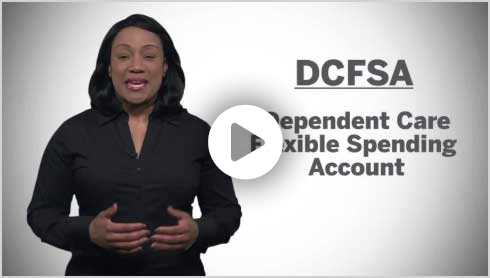You can save money on your health care and dependent care expenses by enrolling in a tax-efficient Health Savings Account (HSA) and/or Flexible Spending Accounts (FSAs).
2025 accounts:
Parexel offers the following accounts:
- Health Savings Account (HSA): Available only to employees who enroll in the $2,000 or $3,300 Deductible Plans.
- Flexible Spending Accounts (FSAs):
- Health Care FSA: Available to employees who enroll in the $1,000 Deductible Plan or the $1,500 Deductible Plan.
- Combination FSA: Available to employees who enroll in the HSA.
- Dependent Care FSA: Available to all eligible employees, regardless of medical plan enrollment.
Key features
Tax-free money
Money goes in tax-free and comes out tax-free when it’s used for eligible expenses.
Convenient payroll deductions
Contribute to your accounts easily and effortlessly.
Helpful budgeting tool
Plan for upcoming expenses by setting aside money each paycheck.
Note: You must enroll if you want to contribute to these accounts in 2025, even if you currently participate.
How much could you save?
Here’s an example. Let’s say Amy decides to set aside $2,000 in an HSA or FSA for the year. Normally, on that money, she’d pay $480 in federal income tax, $100 in state income tax, and $153 in FICA tax. So, by contributing that $2,000 to her HSA or FSA, she’ll get $733 in tax savings for the year.
| Without an HSA or FSA, Amy would pay … | Savings |
|---|---|
| 24% in federal income tax……………………………………………………….. | $480 |
| 5% in state income tax……………………………………………………………. | $100 |
| 7.65% in payroll tax…………. | $153 |
| Her total tax savings for the year with an HSA or FSA …………. | $733 |
This hypothetical illustration is for educational purposes only. Dollar amounts or savings will vary depending on income, state and city tax rules, and other factors. Please consult a tax, legal, or financial advisor about your own personal situation.
With the $2,000 Deductible Plan and the $3,300 Deductible Plan, you’re eligible to open and contribute money to a Health Savings Account (HSA) through WEX. The HSA is a tax-free savings account that you own. You can use it to pay for eligible health expenses anytime, even in retirement. Learn more at Aptia365.
How the $2,000 Deductible Plan and the $3,300 Deductible Plan and you HSA work together

HSA features
- Contributions from Parexel. The company helps fund your HSA — that’s free money toward covering your health care expenses! In 2025, Parexel will contribute $500 to an HSA that you open if you enroll in employee-only medical coverage or $1,000 if you’re covering dependents.
- You can save, too. You can also contribute to your HSA through automatic, before-tax payroll deductions. You can stop, start, or change your contribution amount throughout the year to match your needs and budget. In 2025, the total contributions (from both you and Parexel) allowed by the IRS are:
- Up to $4,300 for employee-only coverage
- Up to $8,550 for family coverage
If you’re age 55 or older, you may contribute an additional $1,000.
| See how much you can contribute to an HSA in 2025: | ||
|---|---|---|
| Employee only | Employee + dependents | |
| Contribution limit | $4,300 | $8,550 |
| Minus Parexel’s contribution | -$500 | -$1,000 |
| Maximum amount you can contribute | $3,800 | $7,550 |
How an HSA works – You never pay taxes!
Put money in tax-free.
|
Pay for care tax-free.*
|
Earn interest tax-free.
|
|
* Money in an HSA can be withdrawn tax-free as long as it is used to pay for qualified health-related expenses. If money is used for ineligible expenses, you will pay ordinary income tax on the amount withdrawn, plus a 20% penalty tax if you withdraw the money before age 65.
Who’s eligible for an HSA?
In order to establish and contribute to an HSA, you:
- Must be enrolled in either the $2,000 Deductible Plan or the $3,300 Deductible Plan.
- Cannot simultaneously participate in the Health Care FSA (but participation in a Combination FSA is allowed).
- Cannot be enrolled in any other medical coverage, including a spouse’s plan or Medicare.
- Cannot be claimed as a dependent on someone else’s tax return.
You should review IRS rules for making HSA contributions if you will turn age 65 during the year.
For more information, see IRS Publication 969.
HSA Transfer of Funds
If you currently have a Health Savings Account (HSA) and want to transfer funds to a Aptia365 HSA, you will need to complete and submit the HSA Transfer Request Form availble here.
Increase your tax savings with a Combination FSA
Use your HSA together with a Combination FSA for additional tax savings. The Combination FSA can be used to pay for dental and vision expenses tax-free. Then, once your out-of-pocket expenses have met the IRS-required medical deductible of $1,600/individual and $3,300/family, your Combination FSA starts acting like a regular Health Care FSA — you can use it for any eligible health care expense, including medical and prescription costs.
Save money on health care and/or dependent care expenses by using a tax-free FSA. The money you contribute to these accounts comes from your paycheck before it is taxed, and you withdraw it tax-free to pay for eligible expenses.
Health Care FSA
Available to employees who enroll in the $1,000 Deductible Plan or the $1,500 Deductible Plan, or who waive Parexel medical coverage
- Contribute up to IRS limit ($3,300 in 2025) through before-tax payroll deductions to help cover eligible medical, vision, and dental expenses.
- Choose your contribution amount during Open Enrollment. You can change your contribution amount during the year only if your personal situation changes.
- Your annual contribution will be divided into equal deductions from each paycheck. Your entire annual contribution amount is available to you from the beginning of the plan year.
- Spend your money by using your FSA debit card or log in to the WEX website to request reimbursement for payments you’ve made.
- You will have a grace period that extends into the following year, allowing you extra time to use up your FSA funds. Eligible expenses incurred through March 15, 2026, may be submitted by March 31, 2026. After that, any unused money will be forfeited.
Combination FSA
Available only to employees who enroll in the $2,000 Deductible Plan or the $3,300 Deductible Plan
- Designed to work together with your Health Savings Account (HSA) for additional tax-saving opportunities.
- Contribute up to IRS limit ($3,300 in 2025) through before-tax payroll deductions. Note that only dental and vision expenses are allowed until you meet the IRS-required medical deductible of $1,600/individual and $3,300/family, then eligible medical and prescription drug expenses are allowed. For a list of eligible expenses, refer to IRS Publication 502.
- Choose your contribution amount during Open Enrollment. You can change your contribution amount during the year only if your personal situation changes.
- Your annual contribution will be divided into equal deductions from each paycheck. Your entire annual contribution amount is available to you from the beginning of the plan year.
- Spend your money by using your FSA debit card or log in to the WEX website to request reimbursement for payments you’ve made.
- You will have a grace period that extends into the following year, allowing you extra time to use up your FSA funds. Eligible expenses incurred through March 15, 2026, may be submitted by March 31, 2026. After that, any unused money will be forfeited.
Dependent Care FSA
Available to regular employees who work 30+ hours per week
- Contribute up to $5,000 in 2025 through before-tax payroll deductions to help cover your eligible dependent care expenses, including child care for children up to age 13 and care for dependent elders.
- Choose your contribution amount during Open Enrollment. You can change your contribution amount during the year only if your personal situation changes.
- Your annual contribution will be divided proportionately by pay period and deposited into your account throughout the year. Only money that has actually been deposited into your account is available for you to spend.
- Spend your money by using your FSA debit card or log in to the WEX website to request reimbursement for payments you’ve made.
- Unused money does not carry over at the end of each year — use it or lose it. Be sure to estimate your contribution carefully!
- IMPORTANT! You can’t use your Dependent Care FSA to pay dependent medical expenses.
| HSA | Combination FSA | Health Care FSA | Dependent Care FSA | |
|---|---|---|---|---|
| Available with |
$2,000 Deductible Plan
$3,300 Deductible Plan |
$1,000 Deductible Plan $1,500 Deductible Plan (Also available if you waive medical coverage) |
Available to all eligible employees | |
| Receive company contribution | Yes | No | No | No |
| Change your contribution amount anytime | Yes | No | No | No |
| Access your entire annual contribution amount at the beginning of the plan year | No | Yes | Yes | No |
| Access only funds that have been deposited | Yes | No | No | Yes |
| Use the money for |
All eligible health care expenses | Only dental and vision expenses until you meet the IRS-required deductible, then use for all eligible health care expenses | All eligible health care expenses | Eligible dependent care expenses, including child care for children up to age 13 and care for dependent elders Cannot be used to pay for dependent medical expenses |
| “Use it or lose it” at year-end | No | Yes Reimbursement “grace period” | Yes Reimbursement “grace period” | Yes |
| Money is always yours to keep | Yes | No | No | No |


